by Ocean Robbins: Most of us know oats best in the form of oatmeal. But this isn’t the only way to consume these nutrient-packed whole grains. So what are the health benefits of eating oats, and are there any downsides to consider?
Here’s my theory about the origins of product placement: Some visionary oat farmer approached Jacob and Wilhelm Grimm and said, “Hey, I’ll give you a share in my oat mill if you change the food in ‘Goldilocks and the Three Bears’ from toast to oatmeal.” I may be wrong, but I’m not going to do the research, so I’ll never know. My point is, there is more to oats than determining their ideal temperature for breakfast. To find out which oats are “just right” for you, let’s explore their origin, nutrition, uses, and health effects.
Many nutrition experts recommend oats as a healthy breakfast staple — and a mainstay of a nourishing and satisfying plant-based diet. Luckily, their enthusiasm is justified, as oats have demonstrated their health benefits to generations of researchers, all the way back to Baby Bear. In fact, when we asked our Food Revolution Summit speakers what they eat for breakfast, many of them told us that oats were their #1 breakfast choice.
Although they make up only 1% of the world’s cereal production, oats are one of the most commonly eaten types of whole grains in the United States. Many people bake with oats. And oatmeal is more popular than ever. According to recent consumer surveys, cooked oatmeal is outperforming cold cereals, largely thanks to its convenience and health benefits. And as more people move away from drinking traditional dairy milk, oat milk sales have skyrocketed. Surveys show that people like the versatility of oat milk as well as its mild taste, pleasing texture, and the environmentally sustainable practices employed by many oat milk producers.
So what’s so special about oats? Are there any downsides to buying or consuming them? And what are some ways you can use oats in your diet?
What Are Oats?
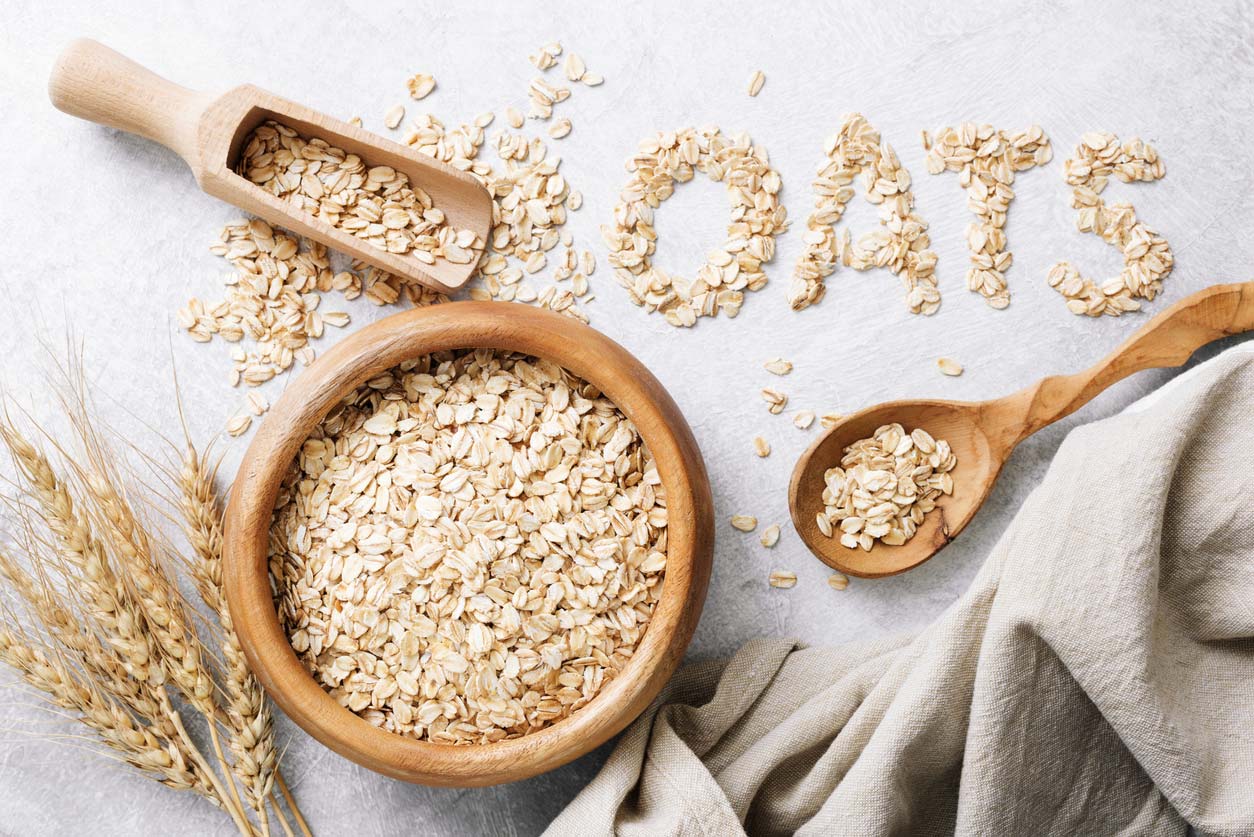
Oats are the small, cream-colored, and oval-shaped grains removed from the cereal plant Avena sativa. In addition to food (and now beverages), you’ll find oats in herbal tinctures, skin care products like face wash and body lotion, (did you ever add powdered oats to your bath to soothe the itching of chicken pox or skin rash?) as well as animal feed.
Humans have cultivated oats for over 5,000 years. And today, they’re grown on every inhabited continent. They grow well in temperate climates with cool, wet summers. With the top three global oat producers being Russia, Canada, and Australia.
Parts of the Avena Sativa (Oat) Plant
The main components of the Avena Sativa plant include the seed (oat), leaves, stems (called the oat straw), and the bran — which is the outer layer of all whole grains. The different parts each have unique uses and nutritional benefits.
- Milky Oat Seed: These are oats that were early-harvested and are most often used as a supplement for relaxation. Harvesting the oats so early in this form means they retain more of their natural minerals like magnesium and potassium.
- Mature Oat Seed: This is the entire seed of the oat, including the edible part and the inedible outer husk. If you want to farm oats, you’ll need to plant oat seeds.
- Whole Oat Groats: These are the hulled kernels of the oats. Their outer husk has to be removed before eating to make them digestible. Whole groats include the germ, bran, and endosperm.
- Oat Straw: This refers to the stems and leaves of the oat plant, which are most often used to make livestock feed, bedding, and supplements designed to boost mood, relieve inflammation, and aid in anxiety. These parts of the plant contain very high levels of iron as well as zinc and magnesium.
- Oat Beta-Glucan: Also known as the oat bran, this is the outer layer of the oat groat. It contains the soluble fiber extracted from the oat plant and is often used in recipes as well as a supplement to support heart health.
Oat Nutrition Facts
Oats may not be the flashiest food on the shelf, but they sure are nutritious. These little grains are an excellent source of an array of vitamins and minerals, including manganese, molybdenum, phosphorus, copper, biotin, vitamin B1, magnesium, chromium, and zinc. Whole oats are also chock full of antioxidant compounds and phytonutrients like saponins and beta-glucans, which have a lot to do with their disease-fighting properties.
As whole grains go, oats are a great source of both soluble and insoluble fiber, providing 15% of your daily needs in just a ½ cup (40 gram) serving. Oats are also a surprisingly high source of plant-based protein. You’ll find 15 grams in a 1 ½ cup bowl of prepared rolled oats, which provides about one-quarter of an average 160-pound person’s daily requirement. So your morning oatmeal can clear you out, like a Roomba for your intestines, feed your hungry microbiome, and help pump you up!
Since the oat plant has so many usable parts, we can’t just talk about “oat nutrition.” What you get, and how much, depends on what part of the oat plant you’re consuming. Whole grain oat processors retain as much of the whole oat grain as they can to optimize its nutrition. In this scenario, only the outer shell — called the hull — is removed from the grains, leaving you with the most nutrient-dense whole grain oat possible. But not all oats are prepared in an optimally nutritious way. We’ll revisit the various forms of oats and oat products you can buy later.
6 Health Benefits of Oats
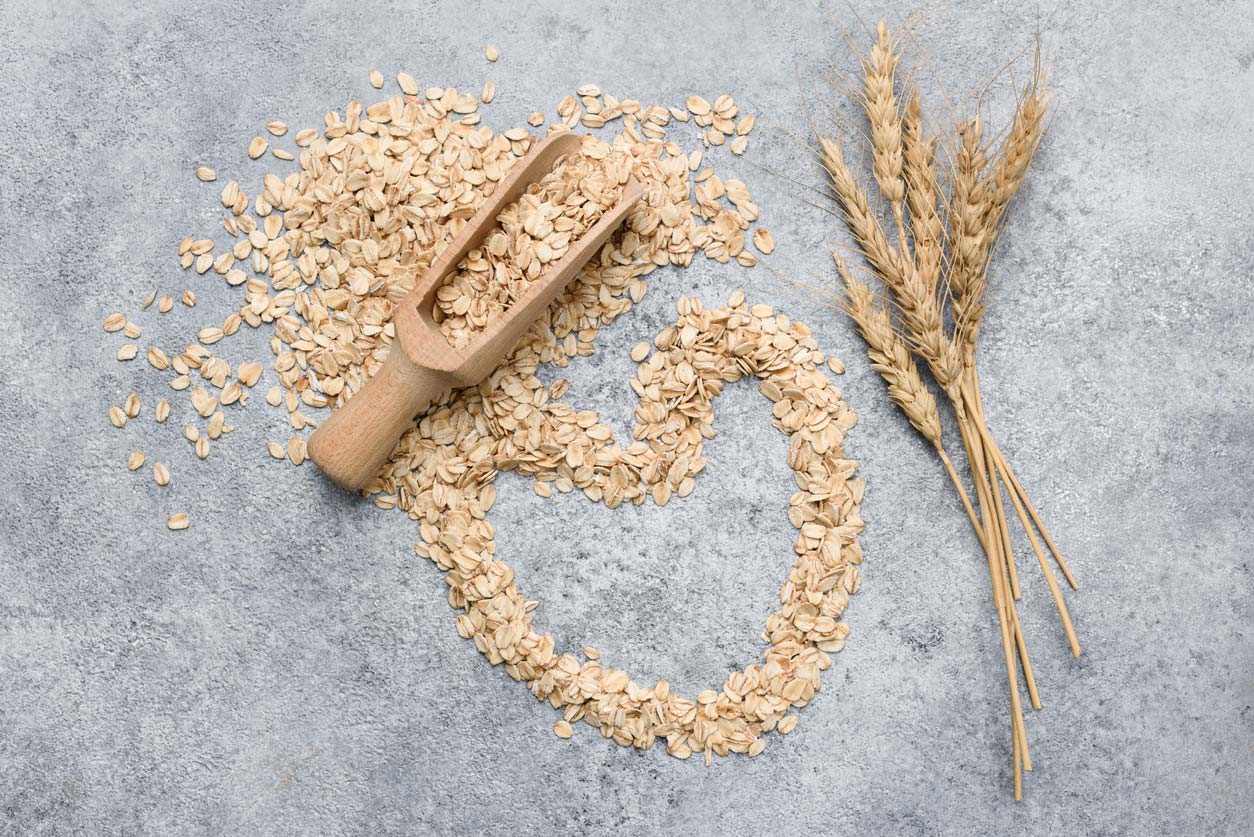
If you don’t already consume oats like Goldilocks and Baby Bear, here are several reasons you may want to add them to your diet.
1. May help balance your blood sugar.
Eating oats has been shown to help control high blood sugar, a symptom of type 2 diabetes that can cause cardiovascular disease, neuropathy, and kidney damage if uncontrolled. In a 2016 randomized control study published in the journal Nutrients, researchers examined the effects of eating oats on overweight adults with type 2 diabetes. In the study, 445 individuals were randomized into four groups: no-intervention control, low-fat and high-fiber diet (including cereals like rice, wheat, black rice, and millet), and two variations of the low-fat and high-fiber diet that replaced 50 and 100 grams of cereals with oats, respectively.
After 30 days, the 50-gram and 100-gram oat groups had the most reduction in blood sugar, as well as the most improvement in other disease biomarkers. And after a full year, the 100-gram oat eaters still enjoyed better blood glucose levels. As an added benefit, they enjoyed lower triglyceride levels, too. Clearly, porridge in the bowl is no flash in the pan.
2. May help you lose weight.
In the same 2016 study described above, the participants who consumed oats regularly also ended up experiencing the most improvement in their weight and waist circumference. The researchers concluded that oats are an optimal whole grain choice for overweight individuals, especially those with diabetes. Why? They hypothesized it was largely due to the oat beta-glucans, which may improve meal heartiness, reduce starch digestion, and increase satiety to help prevent overeating.
In a 2015 study published in Food & Nutrition Research, researchers looked at data among 14,690 children ages 2-18 years to determine weight-related differences between oatmeal and non-oatmeal consumers. They found that kids who ate oatmeal had overall better nutrient intake, diet quality, and a lower risk for obesity, which was again attributed to the fiber and beta-glucan content of oats.
3. May help lower high cholesterol.
You might have seen “heart healthy” labels on oatmeal and oat products at the grocery store. It turns out, this is more than just a food industry marketing ploy. Oats are one of the most frequently recommended foods for people with high cholesterol, or who have other risk factors for heart disease, because of their ability to improve these biomarkers. Research indicates that the cholesterol-lowering effects of oats are related to their beta-glucan. The effects appear more prominent when eaten in the form of unrefined beta-glucan-rich, oat-based foods, and diminish considerably when beta-glucan is used as an added ingredient. So if you’re ever in an elevator with a stranger who turns to you and announces, “I lowered my cholesterol,” they may not be a paid actor after all.
4. May alleviate skin inflammation and irritation.
Oatmeal is a common ingredient in skin products like bath mixes and body lotions because of its ability to soothe inflammation. Oats contain antioxidants that may play a role in anti-aging and inhibiting skin irritation from free radicals. They also offer compounds called avenanthramides that protect the skin from ultraviolet radiation and prevent inflammation. And as a bonus, saying “avenanthramides” everyday probably strengthens your tongue and cheek muscles.
5. May be good for brain health.
Whole grains like oatmeal are a good source of vitamin E, which is a potent antioxidant that protects cells from oxidative damage. Vitamin E has been extensively studied for its potential neurological benefits. In fact, researchers have found that decreasing levels of vitamin E in the blood are associated with poorer memory performance. And research has found that levels of vitamin E tend to be lower among individuals with Alzheimer’s disease.
6. May have anticancer properties.
While most available research on beta-glucans is related to heart health, it appears that they may also have cancer-protective characteristics. In fact, the beta-glucans in oats have been shown to stimulate the immune system, help fight infections, and have anti-cytotoxic and tumor-fighting properties. The antioxidant effects of avenanthramides in oats may also contribute to their cancer-fighting contributions.
Downsides to Eating Oats

Overall, oats are a low-risk, high-reward food. However, despite their numerous health benefits, there are a few things to keep in mind if you’re new to the oat game.
Oats are high in soluble fiber, which is good for digestion, but it may also cause bloating, increased gas, and abdominal cramps for some people. As with other fiber-rich foods, this is more likely to happen if you aren’t used to consuming a high-fiber diet.
But don’t give up on oats if they do a number on you at first. Your digestion is like a muscle, and you have to exercise it to make it stronger and more capable. These side effects usually go away on their own once your digestive tract adapts to the increased fiber intake. Increase your oat intake slowly, and be sure to drink enough water, which helps the fiber move through your digestive tract.
Phytates in Oats
Some people may be concerned about phytates in oats, which are compounds found in several plant foods, including, not just oats, but also beans and lentils. And that can block the absorption of certain minerals. The good news is that most phytates in oats are found in their outer hull. If your idea of fun is chewing on raw, unprocessed, whole oats, you may ingest more phytates than one might like. (If you think your idea of fun might be chewing on raw, unprocessed oats, you’re almost certainly mistaken.)
Since most of us eat processed oats (yes, rolled oats and even steel-cut oats are processed) that are cooked in some way prior to consumption, we take in minimal amounts of phytates. Plus, you can reduce the phytate content simply by soaking whole oats prior to cooking and eating them. (This trick works for legumes as well, by the way.) And I’d argue that the benefits of eating oats far outweigh this potential downside. The more important thing to know about phytates, in my experience, is that using the word in Scrabble will get you 50 bonus points for clearing your rack.
Who Should Avoid Oats
But some people are better off avoiding oats altogether. These folks can include anyone who’s gluten-intolerant or who has diagnosed Celiac disease. While oats are innately gluten-free in their whole, unprocessed state, they are unfortunately a high-risk grain for cross-contamination with gluten-containing grains. When oats are prepared and processed through packaging plants, they may come in contact with gluten. However, some manufacturers acknowledged this as a significant concern for consumers and invested in third-party testing to ensure that their oats are certified gluten-free.
Still, this may not be enough to address the root problem for some people with Celiac disease. Interestingly, there is also some documentation of Celiacs reacting specifically to proteins in oats called prolamins, so oats are not generally recommended for this population.
Lastly, while rare, some people are allergic to the oat protein called avenin. Like other allergic responses, an avenin reaction may include symptoms like blotchy skin, mouth and throat irritation, congestion, itchy eyes, digestive upset, and in severe cases, trouble breathing or anaphylaxis. If you think you may have an avenin or oat allergy, then you should, perhaps obviously, avoid oats. Your healthcare provider can prescribe a test that can confirm the diagnosis.
Are Oats Sustainable?
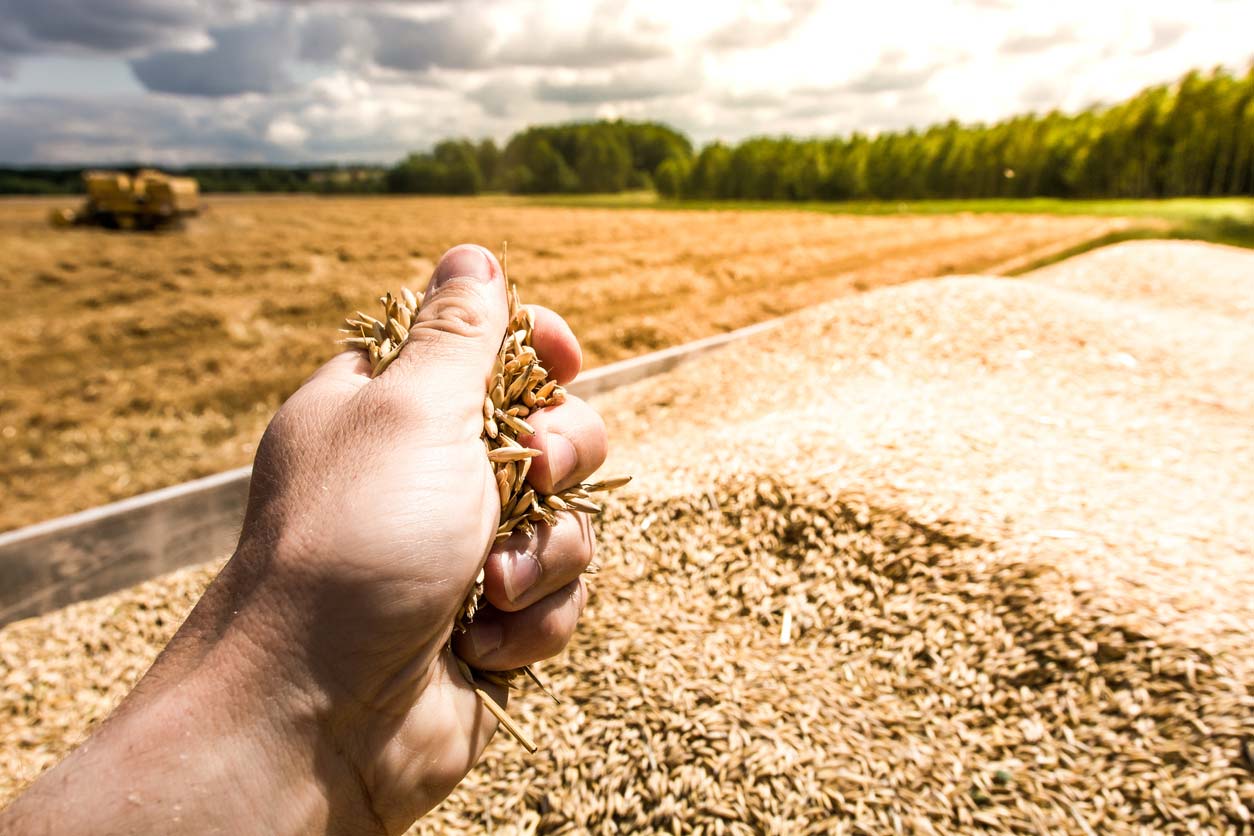
More good news for oat lovers! They aren’t just good for you, they can be good for the planet, too. (In addition, of course, to mares and does, but not little lambs, who apparently are partial to foliage.)
Oats offer many sustainability benefits. Planting them earlier in the growing season, followed by a cover crop like peas, can help interrupt pest cycles and replenish the soil. (If you see cutworms and locusts wandering around a field totally disoriented, wondering where the oats went, and why there are pea plants everywhere, you know this strategy worked.) A cover crop grown following oats may also add enough nitrogen to the soil to significantly reduce the need for nitrogen-rich fertilizer — helping to lower greenhouse gas emissions.
And when they’re planted during the rainy spring, oats help the soil soak in water, preventing erosion and loss of nutrients. Introducing oats also keeps roots in the ground all year, which can improve water quality by reducing nitrogen runoff into waterways.
Unfortunately, some oats, when not certified organic, may contain glyphosate (a probable, carcinogenic weed-killer that’s often used as a desiccant to dry the crop out before harvest). But, there is a growing movement away from this practice. As of January 2021, Richardson International, Canada’s largest agribusiness company, began to refuse oat crops sprayed with glyphosate or other chemical desiccants.
Oat Milk
How does sustainability look when it comes to oat milk? While a new industry in the United States, oat milk has been proving itself in other countries for years. And what we’ve seen looks pretty good.
The Swedish-based company Oatly, in particular, makes sustainability practices a primary focus of their oat milk. They team up with local farmers wherever they distribute products to and send used oat kernel hulls to farms and biogas facilities — to be used as part of fertilizer and animal feed — instead of it going into landfills. Oatly packaging is also technically recyclable, according to their FAQ page, although many US recycling facilities do not currently recycle beverage cartons.
Not all is perfect in oat-milk-land, however. Some varieties use canola or rapeseed oil, which may be genetically modified unless it’s certified organic or certified non-GMO. And many oat milks are also high in sugar. Oatly also came under fire recently for receiving a $200 million investment from Blackstone Group, which is involved in Amazonian deforestation in Brazil. This led many consumers to boycott the brand.
So there’s work to do to improve the sustainable oat movement, but I’d like to think we’re off to a pretty good start, especially when you compare oat cultivation and processing to other milk sources, including cows (which cause considerable environmental harm) and almonds (which use more than their fair share of water).
Should You Buy Organic Oats or Oat Products?
As of 2018, a large number of oat products were found to contain concerning levels of glyphosate. Testing conducted by the Environmental Working Group (EWG) found glyphosate in every sample of oat-based breakfast cereal and similar oat foods — like granola bars — that are marketed to kids. These included many prominent and popular brands, including Cheerios, Quaker, and KIND, as well as “health food” brands like Nature’s Path, Kashi, Barbara’s, Whole Foods, and Bob’s Red Mill.
However, organic oat products had significantly lower levels of glyphosate compared to products made with conventionally-grown oats. What’s more, ⅔ of the organic oat products did not exhibit detectable amounts. And none of them exceeded the EWG safety threshold.
What this tells me is that due to the widespread use of RoundUp, and its saturation in many oat-based products, it’s best to buy organic oats whenever possible.
Types of Oat Products
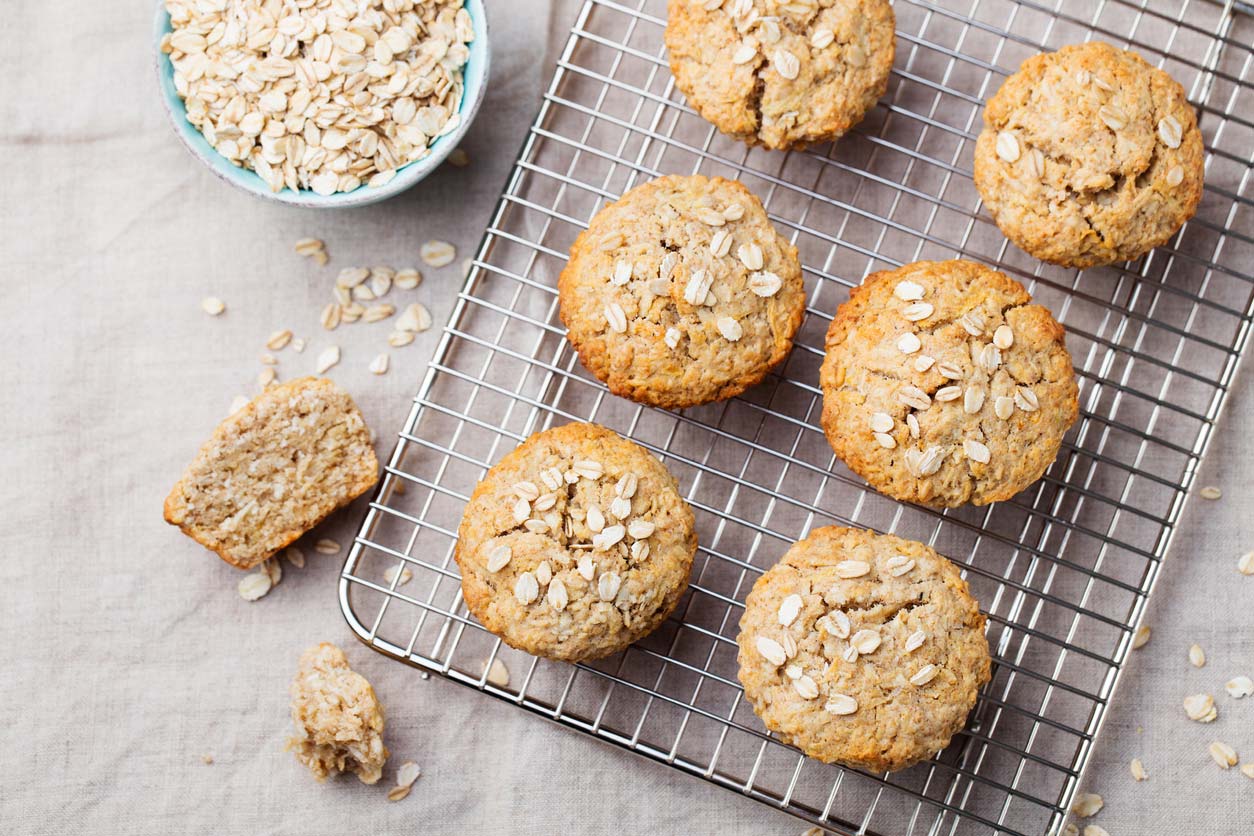
If you’re wondering how to tell the difference between the various types of oats and oatmeal products at the grocery store, here’s a rundown of what different labels mean and how to best use them.
Oat Groats
These are the most whole form of oats where you’ll find the entire oat kernel minus the husk. The kernel includes the germ, endosperm and bran — layers that provide vitamins, minerals, phytonutrients, and both soluble and insoluble fiber. This highly nutritious oat product just requires rinsing and soaking overnight. To prepare, you just boil them in some water for around 20 minutes and serve just like oatmeal.
Steel Cut Oats
These are oat groats that have been minimally processed simply by using steel cutters to cut the grains into a few pieces each. This results in coarse oatmeal best used to cook into traditional, hearty porridge. They are sometimes called Scottish or Irish oats, but real Scottish oats are prepared by stone-grinding.
Rolled Oats
Rolled oats are steel cut oats that have been steam-softened and rolled into flake shapes. They can come in “old-fashioned” form or “quick” form, the latter meaning they’ve been rolled thinner and steamed longer. Rolled oats in general are often used in baking to make muffins, pancakes, homemade granola, or a smoother, finer oatmeal breakfast. The quick-cooking or “instant” rolled oats are usually the type found in single-serving oatmeal packets at the supermarket. Your body digests instant oats more quickly. And as such, they can cause your blood glucose to rise faster. So unlike thicker rolled oats, they are not a low glycemic food. Instant oats fall under the medium category of the glycemic index.
Jumbo Rolled Oats
These are rolled oats, but the flakes are not made quite as small. Jumbo rolled oats are often used to make a thicker porridge with more texture, or even used in their raw form to make muesli — a breakfast dish of raw oats with chopped fruit and nuts.
Oatmeal
Oatmeal is made by rolling and breaking whole oats into a variety of oat “grades” ranging from coarse oatmeal to fine oatmeal. Traditional oatmeal is used for muffin crumb toppings, or to make scones, biscuits, crumbles, as well as other breakfast and non-breakfast foods.
Oat Flour
Oat flour is made by grinding oats into a powder — which can range from coarse to fine — for use in making baked goods. It can also be used to thicken stews and soups.
Cooking with Oats
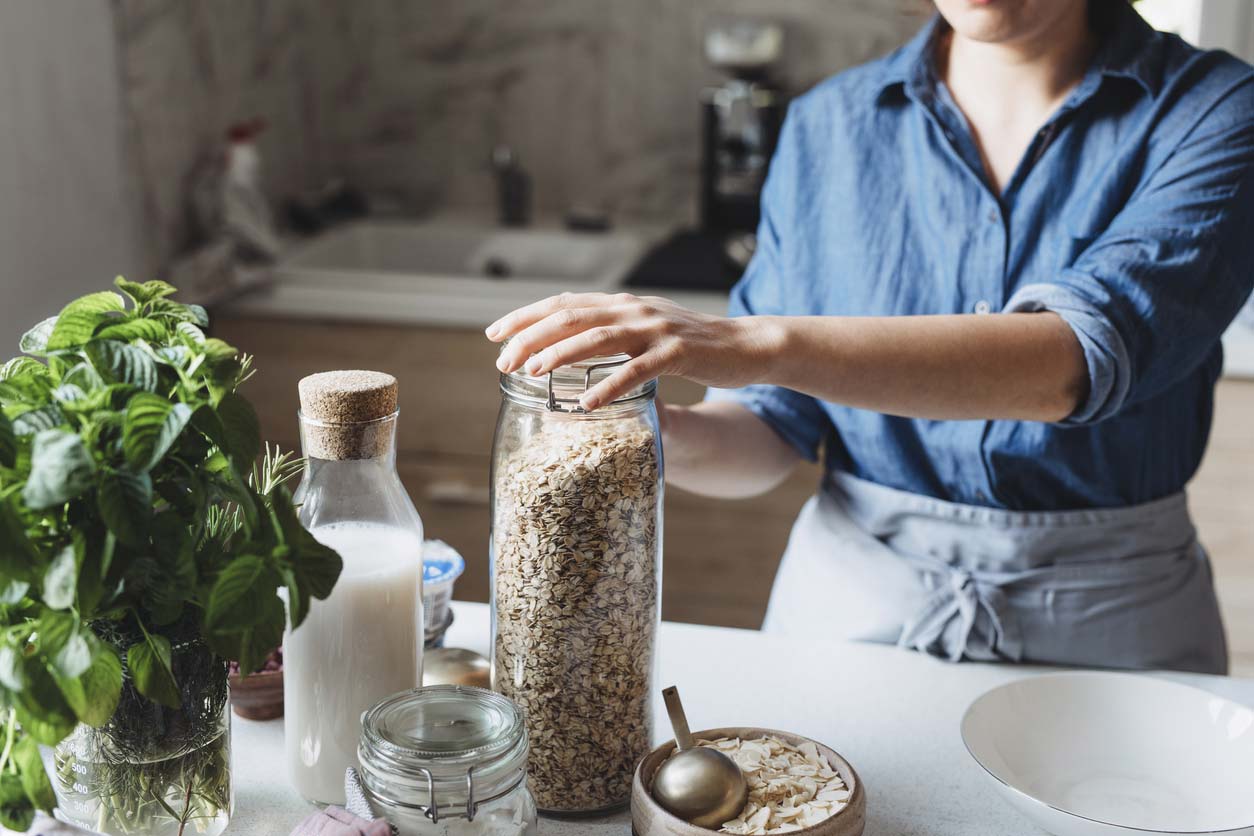
If you’re wondering how to cook with oats, here are a few ideas. In addition to oatmeal and porridge, you can use oats as a substitute for flour in baking recipes, like breads and muffins. You can also use them to add nutrients and help homemade veggie burgers stick together. Oats are a great addition to homemade granola and granola bars, as well as desserts like crisps and crumbles. Soaked oats can go into smoothies, too, adding fiber, vitamins, and minerals with very little flavor impact.
Oat Recipes
Now that you know some of the ways oats are good for you and the planet, let’s look at some of the best ways to incorporate more oats into your diet.
1. Carrot Cake Overnight Oats
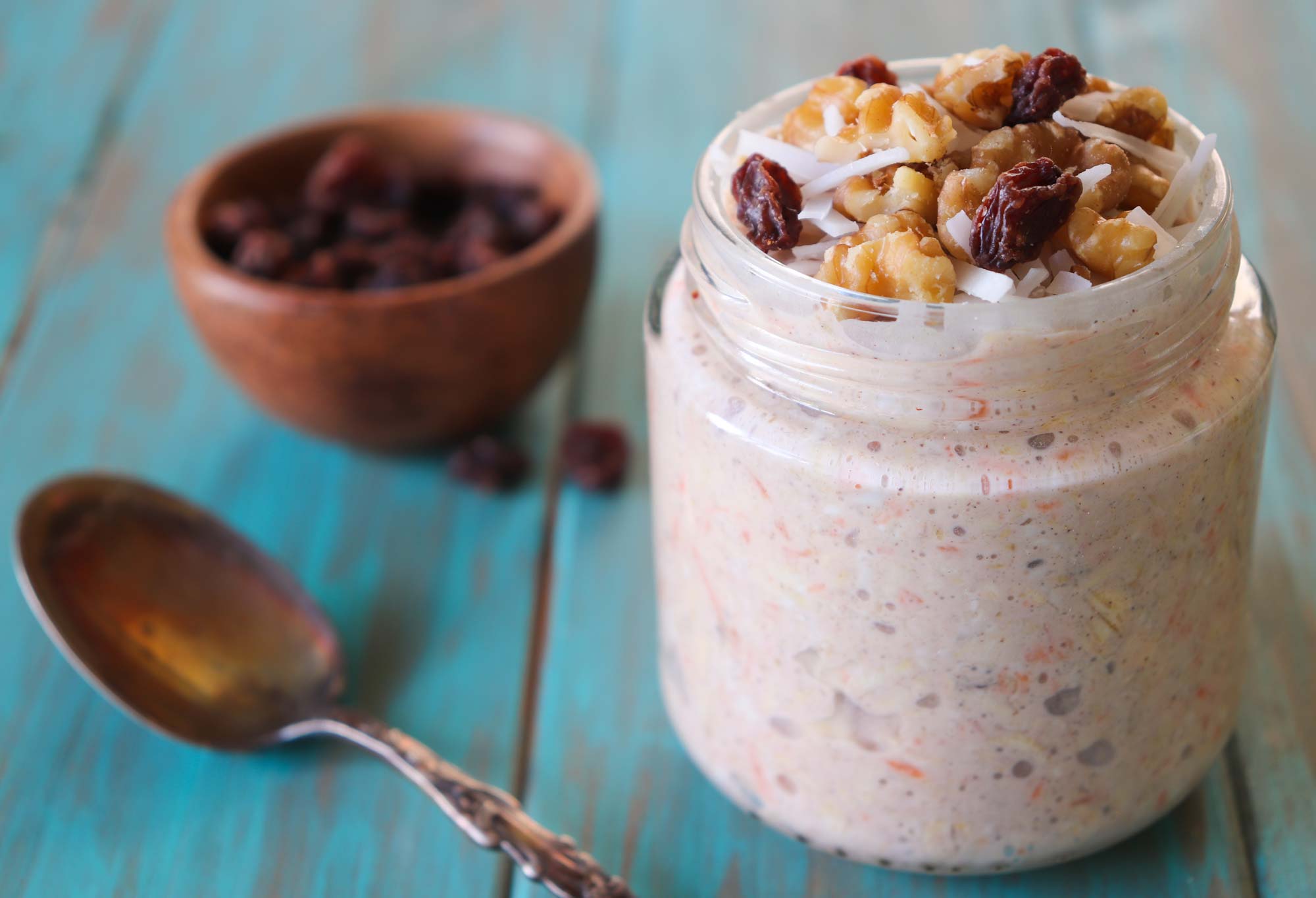
Yes, you read that right — carrot cake for breakfast is a thing. However, this carrot cake is high in fiber, vitamins, and minerals that will help to power you through the morning and beyond. The next best thing to this breakfast’s nutrition is the time it takes to prepare it, which is less than five minutes! The magic happens while you sleep. And the fun happens when you wake up and get to indulge in this tasty and nutritious overnight oats recipe.
2. Hearty and Healing Lentil Burgers
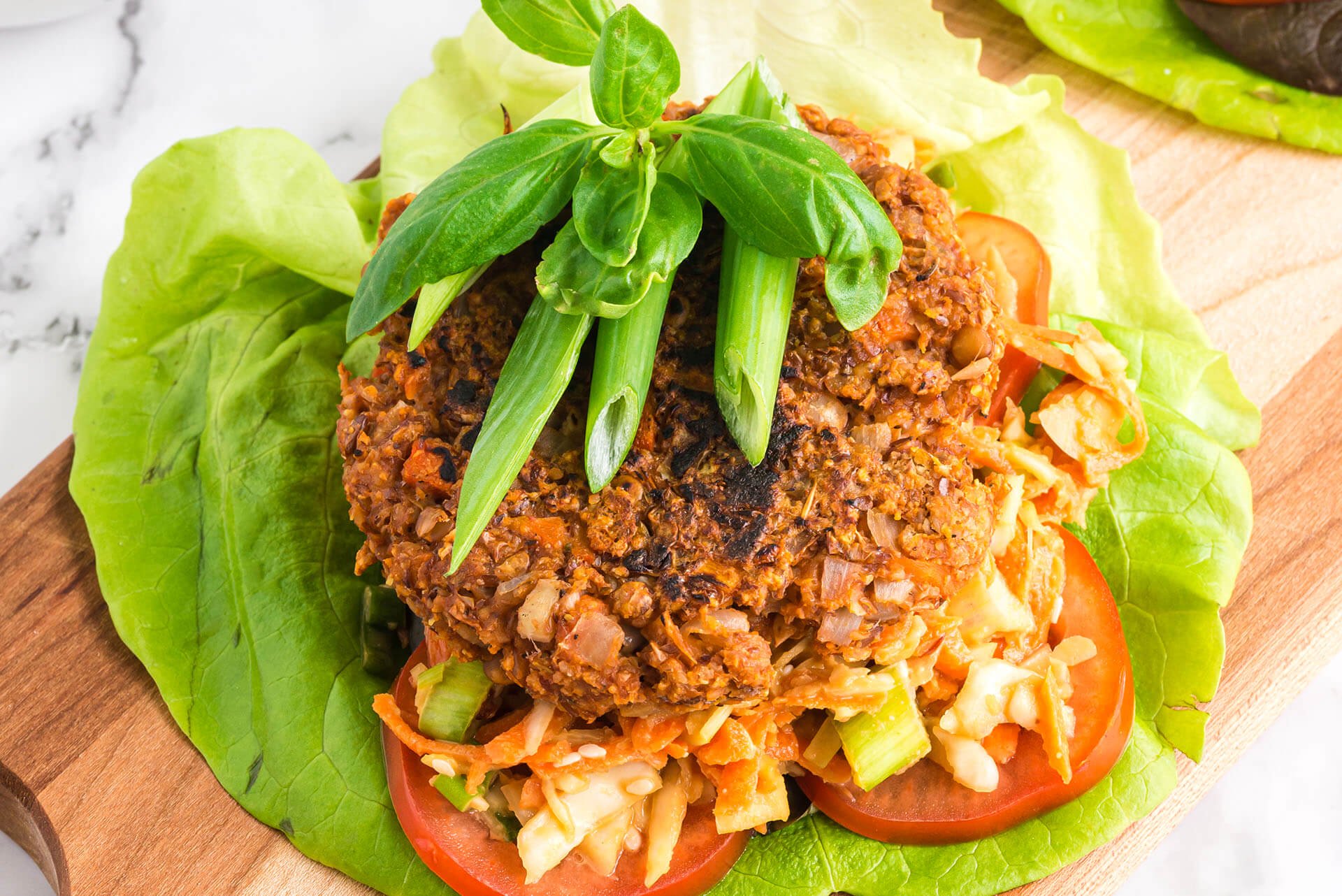
Fun fact about oats: When you grind oats to make oat flour or oatmeal, the ingredient can act as a binder for plant-based burgers — as demonstrated in this Hearty and Healing Lentil Burger. What’s more, the oats in their ground state still add the same amount of healing fiber, vitamins, and minerals that you’d get in your traditional oatmeal breakfast. Consider it a sneaky and functional way to add even more nutrients to your plant-based meals.
3. Kale and Mushroom Oat Groats
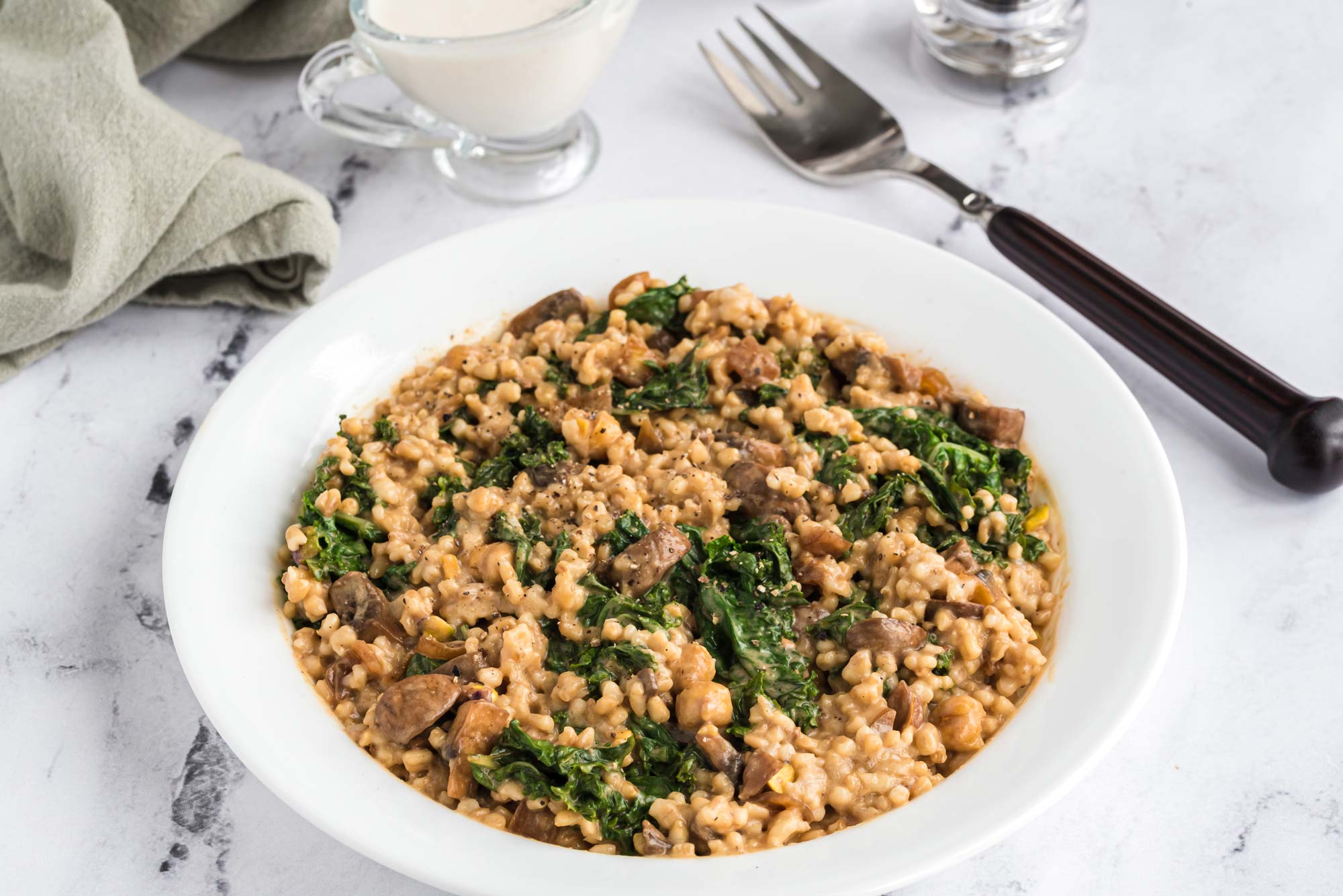
Haven’t tried savory oats yet? This is your chance to fall in love with the versatility of oats using whole oat groats! It’s creamy from the pressure-cooked oats and coconut milk, and savory with a touch of umami from the tamari sauteed mushrooms. Add some nutrient-dense kale and top with nutritional yeast and herbs, and you might find yourself with a new savory breakfast or dinner staple.
Make Oats a Staple in Any Diet

Oats are a versatile, convenient, and highly nutritious food that can be enjoyed in many ways. Although some people, including those with Celiac disease, may want to avoid them, oats can be a great addition to a healthy diet — especially if you can get organically grown oats to avoid glyphosate contamination. So if you want to be like Goldilocks, Baby Bear, mares, and does, try a few new oat recipes. And maybe even make oatmeal a regular way to start your day!










































